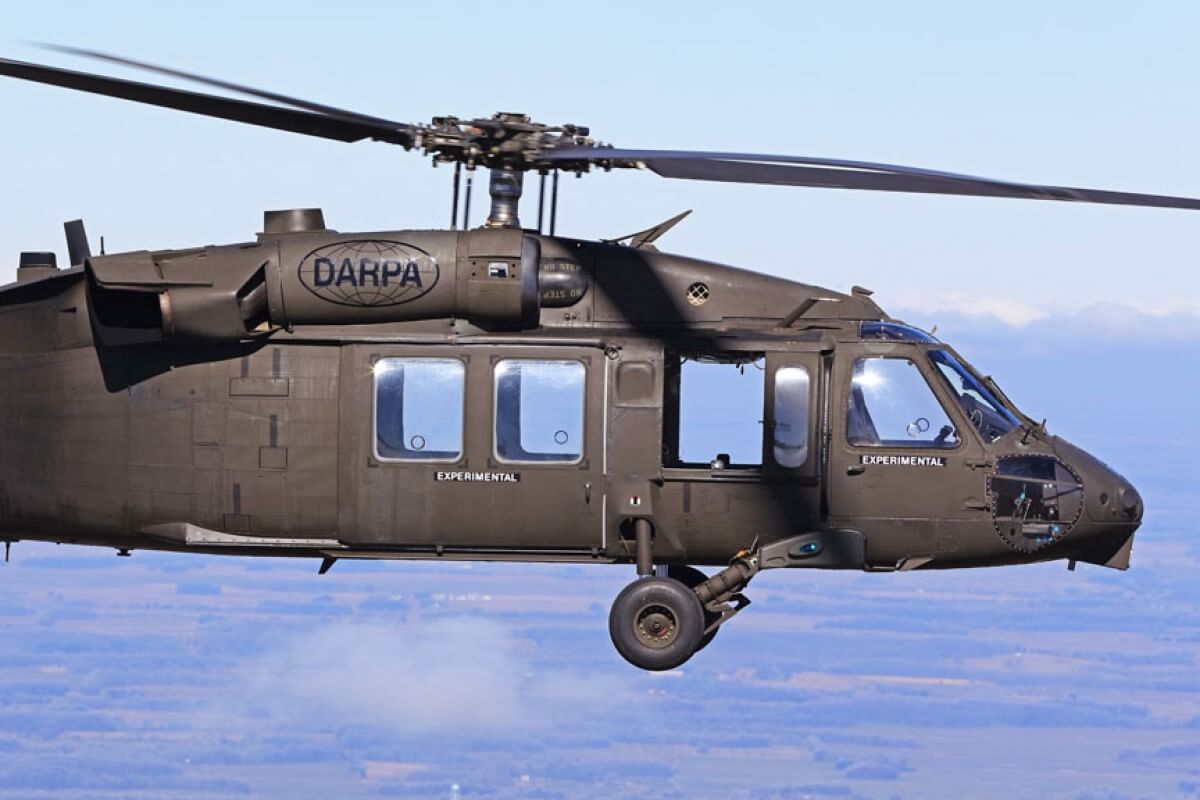Aerospace
How did DARPA’s Black Hawk fly without a pilot?

You may have witnessed autonomous aircraft flying various objectives, but have you ever seen the American well-known military chopper Black Hawk fly without a pilot? Last February, this helicopter passed through testing with a revolutionary system that allows it to operate without a pilot; it is a breakthrough technology in the twenty-first century produced by the Defense Advanced Research Projects Department, a research and development agency of the United States Department.
The DARPA Aircrew Labor In-Cockpit Automation System (ALIAS) programme accomplished the first flight of an unmanned UH-60A Black Hawk helicopter. On February 5th, Sikorsky, a Lockheed Martin company, performed 30-minutes of unmanned flight with the optionally piloted vehicle (OPV) over the US Army facility at Fort Campbell, Kentucky.
Meet the world’s fastest business aircraft, the Global 8000.
ALIAS is a modular, extensible automation system for current manned aircraft that enables safe reduced crew operations, allowing high levels of automation to be added to existing aircraft. It also serves as a foundation for the integration of further automation or autonomy capabilities tailored to specific tasks.
The ALIAS programme has taken advantage of significant advancements in aircraft automation systems over the last 50 years, as well as equivalent advancements in remotely piloted aircraft. Pilots must still manage sophisticated interfaces and respond to unforeseen situations in today’s most automated planes.
Why is China concerned about the Ka 52 being shot down?
ALIAS seeks to assist mission execution from takeoff until landing, including addressing contingency events such as aircraft system breakdowns automatically. Interfaces that are simple to use facilitate supervisor-ALIAS interaction.
It is not new to test autonomous flight in real life; just last year, Airbus tested the A350 aircraft with a complete takeoff, cruise, and landing system that was outstanding.
Comparison of two legendary aircraft Boeing 777x vs Boeing 747 aircraft
This helicopter can be used for rescue missions and other supplies on the battlefield. It will be fascinating to witness similar technologies in the next years.
Tell us in the comments what you think about the self-driving Black Hawk helicopter.
VSR700 autonomous take-off and landing capabilities tested at sea

Aerospace
Boeing Transfers Rocket Stage to NASA, Paving Way for Human Moon Mission

Boeing has achieved a significant milestone by providing NASA with the second core stage of the Space Launch System (SLS) rocket.
This crucial component, crafted at NASA’s Michoud Assembly Facility (MAF), is set to propel the Artemis II crew into lunar orbit, marking humanity’s return to deep space after a 50-year hiatus.
The monumental Boeing-built rocket stage, the largest element of the Artemis II mission, will embark on a journey aboard the Pegasus barge, traveling 900 miles to NASA’s Kennedy Space Center.
Comparison of two legendary aircraft B777x vs B747 aircraft:Click here
Upon arrival, it will be meticulously integrated with other essential Artemis II components, including the upper stage, solid rocket boosters, and NASA’s Orion spacecraft within the iconic Vehicle Assembly Building. This intricate integration process is a vital step toward the eagerly anticipated Artemis II launch, slated for 2025.
“Boeing-built products helped land humankind on the moon in 1969, and we’re proud to continue that legacy through the Artemis generation,” remarked Dave Dutcher, vice president and program manager for Boeing’s SLS program. “Together, with NASA and our industry partners and suppliers, we are building the world’s most capable rocket and paving the way to deep space through America’s rocket factory in New Orleans.”
NASA, Lockheed Martin Reveal X-59 Quiet Supersonic Aircraft:Click here
The delivery of Core Stage 2 marks a significant achievement in the evolution of the SLS rocket. Towering over 200 feet and powered by four RS-25 engines, this core stage, coupled with two solid-fueled booster rockets, will generate a staggering 8.8 million pounds of thrust. This immense power is crucial to launching Artemis II and future missions into the vast expanse of space.
The SLS rocket stands unparalleled in its capability to transport both crew and substantial cargo to the moon and beyond in a single launch. Its extraordinary capacity will facilitate the delivery of human-rated spacecraft, habitats, and scientific missions to destinations including the moon and Mars, ushering in a new era of space exploration.
-

 Travel1 week ago
Travel1 week agoAir India to Expand US Operations with Three New Routes After a Decade
-

 Travel2 weeks ago
Travel2 weeks agoWhy We Should Avoid These Stamps in a Passport
-

 Airlines1 month ago
Airlines1 month agoInvestigations Reveal Fake Chinese Titanium in Boeing and Airbus Jets
-

 Tech4 weeks ago
Tech4 weeks agoChina’s CATL Plans 1,800-Mile Electric Plane Launch by 2027
-

 Airport3 days ago
Airport3 days agoTop 10 Largest Airports in the World by Size
-

 Aerospace4 weeks ago
Aerospace4 weeks agoChina’s Fighter Jets Turn Wings into Autonomous Drones
-

 Airlines4 days ago
Airlines4 days agoAir India Rolls Out A350s for Delhi-New York JFK and Newark Routes
-

 Defence3 weeks ago
Defence3 weeks agoBoeing Enhances Chinook with New Engines and Block II Upgrades at $96 Million







